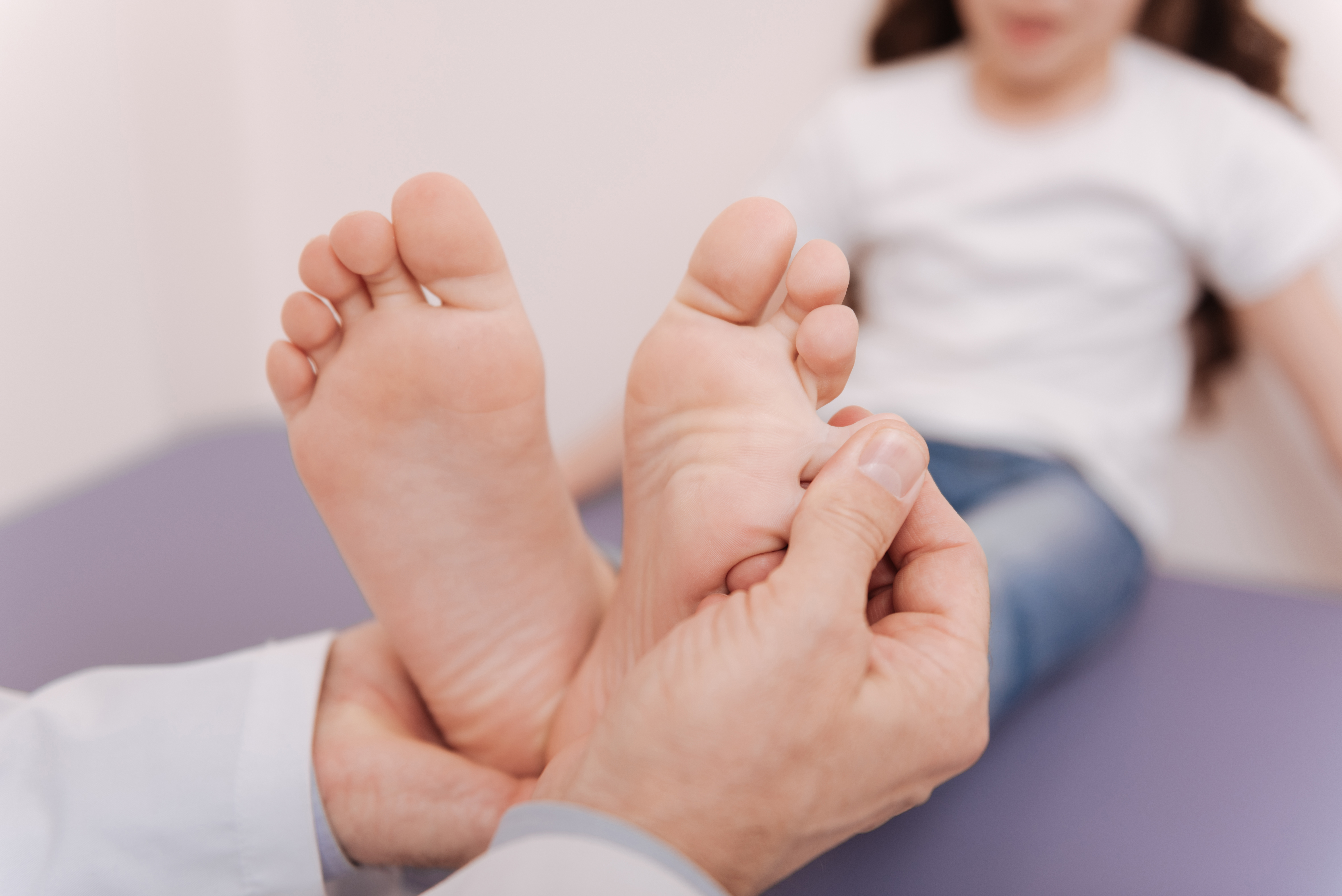

It is estimated that the structure of children’s feet and legs stabilizes between the ages of four and six. A children’s chiropodist experienced in podopediatrics can assess kids’ feet from the earliest stages of their lives. The advantage of routine checks is that they allow for a quick resolution of problems early. The bone and muscle structure of children is more malleable than that of adults. A children’s chiropodist’s gentle care techniques will stabilize your child’s lower extremities. Evaluating children’s feet prevents small misalignments from becoming more complex problems.
What is involved in evaluating children’s feet?
Running, walking, jumping: Young children and teenagers are often more active than adults. Therefore, their foot health must be monitored to avoid injuries and complications. Evaluating children’s feet involves observing them in static and dynamic positions to check for biomechanical dysfunctions. Children’s chiropodists use sensors to record their movements and the pressure their feet exert on the ground. Ideally, walking, jumping and running should be part of the session because the propulsion phase of the foot is an important indicator.
This podopediatric assessment takes into consideration your child’s overall posture. It includes an examination of the foot and ankle joints and the positioning of the pelvis and back. A chiropodist is also likely to assess the mobility of the heel and toes, in particular, and their joint action with the tibia. An X-ray may be necessary to complete the analysis. Finally, evaluating children’s feet may require that they lie down to verify that the legs are of equal length. These tests help identify balance problems, malformations, and even potential neuromuscular problems. It is crucial to tell your healthcare professional about the family history to consider possible hereditary factors.
When to visit a chiropodist for a child
A baby’s congenital foot deformity can be quickly detected during a consultation, even in infants. Before two years old, toddlers’ arches are not yet formed, and their feet are flat by default. At a later age, usually after two years of age, a visit can be scheduled if it is suspected that the arch of the foot has not formed correctly. Finally, foot instability can be detected by observing the wear and tear on children’s shoes. If one side, in particular, is always more worn than the other, a misalignment may be present. Rotation of the knees (inward or outward) and the ankles can also give a good idea of the presence of a problem.
Usually, a visit to the chiropodist is necessary when a child complains of foot pain after an activity or if they avoid jumping or running. The same is true for children who stumble excessively long after learning to walk and those who walk only on their toes.
Children’s feet treatments
A chiropodist can treat deformities of the child’s foot, pathologies that affect the skin (such as plantar warts), and nails. Flat feet and sunken feet are common ailments in children, but custom-made orthotics are a simple and very effective way to correct them. The advantage of this method is that it is not restrictive; the child can continue to be active. In addition, the child will only wear the brace for a limited time until the lower limbs are adequately aligned. Manual therapy is also a treatment that can be offered, which helps to rebalance the joints.
On the other hand, ingrown toenail problems can occur when a child starts wearing shoes. But this problem can be easily treated by the chiropodist, who can advise parents on avoiding recurrences. Finally, you can consult a chiropodist to heal injuries, including ankle sprains, Achilles heel tendonitis and foot fractures.
Preparing your kid for children’s feet treatments
For your child to be most receptive to the podiatric examination, it is essential that they feel confident. You should explain to them how the session will be conducted and why the consultation is important. They should be relaxed enough to move naturally so the chiropodist can observe them. A stressed child may adopt a more rigid gait, which may bias the assessment. Communication is the key to building the child’s confidence. Make sure you talk to your child about the session beforehand. The chiropodist can speak with your child about what they are doing in terms that are accessible to the child.
Taking care of your child’s foot health with a podopediatric assessment
FootNetwork chiropodists are trained to treat conditions related to children’s feet. More than that, they know how to create an atmosphere of cooperation with your child in the interest of their well-being. To ensure your child’s smooth development and enjoyment of activities, consult a qualified chiropodist; as they evaluate your child’s feet and shoes, they will prescribe the right children’s feet treatment as they assess your child’s feet.

